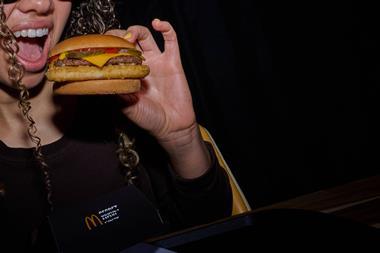More pets, especially cats. And more being lavished on them than ever before. Together that means boomtime for the petcare sector.
Pets have it good these days, with many owners happy to pay high prices. And consumers' nutritional aspirations are being transferred to their pets.
That means not just healthier, premium, more natural foods in pouches, but also products for lifestages and lifestyles.
And if people are prepared to pay for desserts for dogs, no wonder manufacturers are falling over themselves to woo pet owners.
Research company BMRB says: "With many parts of the grocery business looking sluggish, the petfood sector stands out. This is due, in no small part, to its demographics, with the population of some of the most common pets on the rise.
"The proportion of cat-owning households in the UK, in particular, has increased significantly in recent years."
The petfood sector has grown by almost £1m a week to £1.54bn in the past year [TNS 52 w/e 13 August], with the nation's 14 million cats and dogs eating 100 million meals each week.
The increasingly sophisticated lifestage products in both cat and dogfood are commanding higher prices and have been a major contributor to the 4% value growth in the category [TNS 52 w/e 13 August]. Andrew Harding, customer development director at Nestlé Purina, believes, as our awareness of nutrition grows, the market will increase still further.
"We are going to see an acceleration of premium products and other anthropomorphic developments in petfood. Recipes will be more interesting and complex. As people's own health awareness increases, they are starting to look at whether they are using the right products for their pets."
While the prospect of companies putting GDA-style labelling on petfood is distant, it would have been inconceivable ten years ago to see foods for specific lifestages, such as puppy, kitten or adult, and lifestyles, such as foods for indoor animals and for those that get more exercise.
But it's early days. Nestlé Purina estimates that dog and cat lifestage products are worth £75m in grocery and are growing 6.3%. Harding also points out that petfood is one of the few categories not to have shelf space squeezed by non food.
"There will be more developments around lifestage and lifestyle," says Harding. "There's still a lot of educating to be done to persuade people to match the right product to the right stage of life."
Perhaps the most bizarre new products coming out are in the so-called lifestyle category. Larger brands are competing to "find more and more elaborate ways of segmenting their customers into niches that warrant a price premium," says Peter Parkinson, MD of Town & Country Petfoods, owner of the HiLife brand, which has launched the Just Desserts range of puddings for dogs.
Musgrave Budgens Londis petcare buyer Steve Uglow says growth is being driven by added value products and treats, especially in catfood, with premium products the key driver. "Generally, there have been more developments in cat products. And that's where we're seeing higher sales," he says.
As the cat population continues to grow, and dog ownership declines, MBL will be devoting more space to feline products. "The single-serve pouch market has overtaken traditional single-serve cans, while multipack cans are growing in the convenience sector as single cans decline."
Procter & Gamble's Iams marketing director Richard Leerwood adds: "We expect there to be a continued trend towards premium products, and we will continue to invest in the high value section of the pet category."
TNS data shows that pouches for cats have been one of the success stories of the year, growing 25% in value year-on-year. The next best performer is cat treats, up 17.2%.
Masterfoods has pinpointed both these areas as "growing and important shopping occasions that retailers should take advantage of to grow their petfood sales".
The Whiskas and Pedigree brand owner says: "Some retailers aren't fully aware of the huge opportunity that pouches bring. In the catfood market, sales of pouches exceed those of cans, and you will get the best results if your range reflects this."
It urges retailers to cash in on the treats sector and says trading up is on the increase. "Stock a choice of sizes. Offering a range of multipacks encourages multi-purchase. This is important for pouch catfood - 12-packs are the fastest sellers."
Given the importance of the burgeoning category, companies are keen to invest in marketing and advertising to win over more consumers. Nestlé Purina has relaunched its Bakers range in response to the move from wet dogfood into dry and says it has been working closely with retailers to expand value in the category. "We have been emphasising the importance of correct product ranging," says Harding.
"With consumers frequently shopping in different types of stores, it is important to stock the leading brands to answer their needs, whether they are looking to top up or do a big shop. The way products are displayed is also important for shoppers to identify the products and to help them with easy selection of the correct food, so you will start to see more signage and information in the petfood aisle."
Masterfoods, meanwhile, has invested more than £14m in media activity for its Whiskas Expressions campaign. And it too is working with retailers to maximise the market's potential.
It says its research shows that petfood shoppers on average spend only 80% of what they intend to in stores, and puts two thirds of failed purchases down to poor availability. And it warns that 50% of shoppers will not return to a store if they have been let down on availability on more than two occasions.n













No comments yet